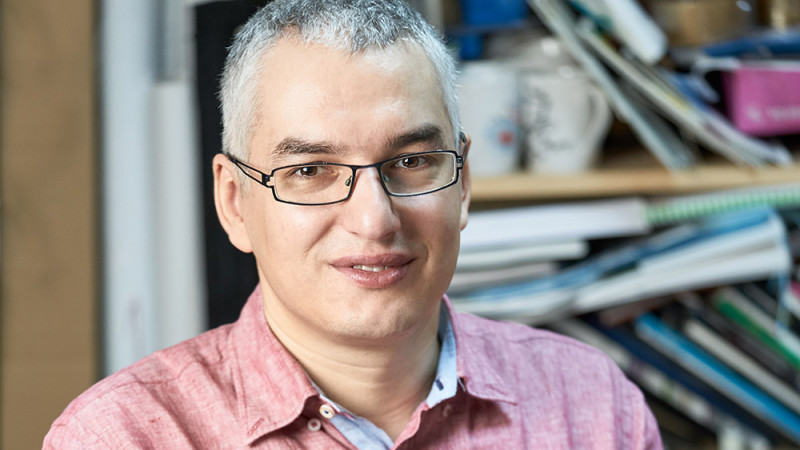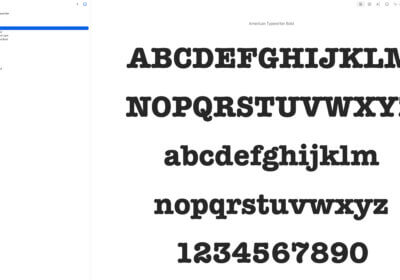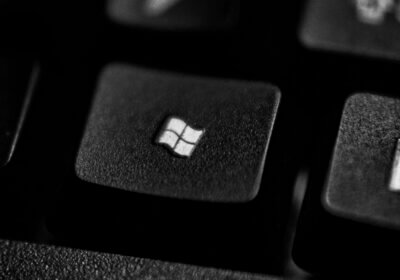This is a translation in english of an interview that Alexandru Cuibari (the owner and technical lead of) gave in one of the leading marketing magazine in Romania, Iqads.
Alexandru Cuibari: „ This idea came to life from a need of my own. During highschool, I used to make greeting cards.”
As a highschool student, Alexandru Cuibari, used to impress girls and teachers through an ingenuous method at that time: by creating greeting cards for them in an editing program on a 386 (or was it a 486?) computer, which didn’t even belong to him. Looking back, he referred to that moment as the starting point of his fonts obsession (not at all unhealthy) to which he would come back many years later. Around 2010, when he realized that there is no tool on the market to identify free fonts, he began designing the algorithm for one.
If until recently, Whatfontis has been a personal project, now Alexandru is planning to turn it into a business.
And it has all the prerequisites to become a successful one: the site receives 700,000 designers worldwide every month, the traffic has been growing annually by 15-20% throughout the 8 years of the project.
A Programmer profile
I specialized in programming, my bachelor’s degree reads “diplomat engineer in the systems and computer science”. After having graduated from the faculty I worked for 2 years as a programmer in Iasi and then I decided to take on a different career path, the path of entrepreneurship. I didn’t succeed at first, I tried what everybody else was trying around 2001: neighborhood IT networks and web hosting. Apart from that, I used to work a lot as a freelancer for companies in New Zealand, having this way the opportunity to get in contact with the advertising industry.
My everyday life? Almost every morning I enjoy a play session with my 4 year old daughter. But before becoming a father, my mornings were busy with monitoring servers, checking emails, improving the website performance, adding new fonts and optimizing the system.
Whatfontis is a tool for designers, famous or not, receiving layouts whose creation source cannot be traced anymore. For those creatives who reach a discussion point going like this: „ please use THAT font”. The tool can also be used in small print shops custom making T-shirts, mugs, posters or any other promotional items in limited series.
This idea came about during highschool, when I was very passionate about making greeting cards. I used to spend many nights at my uncle’s house, as he had a 386 or 486 computer with an editing program which allowed me to make all kinds of greeting cards which I could then offer to girls or teachers. So, most likely, that was the moment when my font obsession started. Since I was not very good at drawing, I might have felt the need to compensate this somehow. When I saw the first magazines from abroad, brought by an uncle from Germany, I was amazed to find out that there is so much more than Times New Roman and Arial out there.
Later, in 2010, I realized that there is no tool on the market to identify free fonts, only tools for commercial fonts detection, so, I designed the one for free fonts.
The moment has come for WhatFontIs to grow from a personal project to a professional business, I think. I gave up outsourcing to put all the focus and energy on this project. Romanians are indeed very skilled at IT, however I notice a lack of business culture which is preventing us from having Romanian products able to compete with international ones.
Users, statistics, accounts
We own over 400,000 fonts in our database. Monthly, we have around 700,000 visitors, and over the last 8 years (we first launched the project in May 2010), traffic has been steadily increasing annually by about 15-20%. There are quite a few clients in Brazil, India and the United States that identify around 20-30 fonts per day. This is also the top three for users accessing Whatfontis (United States, India and Brazil in this order).
In terms of users’ behaviors, we’ve seen a traffic increase in images identified from certain global contexts, such as the Rio Olympics medal winners or the Oscars winners.
We have launched the free and patron account version a few months ago.Most of the paid accounts belong to users outside Romania.
For patron account users ( $ 29.90 / year), ads are hidden and more options are shown to help them get the job done faster: more fonts in the results list (60 visitor, 80 account free vs. 100 patron), detection results saved, so they can easily find what have been looking for in the past, results filtered based on the type of license (free for personal use, commercial use etc.), or the font price etc.
Monetization
Through advertising, affiliation and, as already mentioned, patron accounts. Currently, the revenue mainly comes from advertising. By the end of 2018, the number of paying subscribers is expected to reach 2,000. It would be a decent figure to help keep the service “as clean as possible” and avoid playing Adblock or not with users: D.
Affiliation is helping, but less than you might think. If there are relatively easy ways to detect unauthorized use of images – who has not yet received an email from Getty? ☺ – when it comes to fonts, the piracy rate is quite high, especially among freelancers and users in poor countries.
Challenges
The technical development would be the first challenge. Every day, there are 20 new fonts revealing very subtle differences between letters, sometimes difficult to be distinguished even by the eye of an experienced printer.
Promoting the tool is the second great challenge. Even if you have a very good product, it’s never enough, you have to promote it every day to get it better known, which is a lot more complicated than I originally thought.
At the same time, the fonts are generally taken “for granted”, while the piracy rate is significantly high, which prevents the industry from performing. We have very talented font designers in Romania, such as Levi Szekeres from Cluj, Robert Corseanschi from Lupeni or Mugur Mihai from Brasov who, after having worked on a font for months, they find it copied and used for commercial purposes without having their work acknowledged and paid.
What’s next?
Well, for quite some time we have been focusing on the mechanical part of the project, on the engine. In 2018, we have started to pay more attention to the aesthetic, visual aspect in order to get it resonate more with the target audience, designers (famous or not) who pack things into visual packaging, regardless of the product support.
We have visited a few agencies in Bucharest to see for ourselves how people use the system on the spot, which resulted into a few months’ work on the system usability. Do you know when you come up with that cool feature you have worked on for months and 20 people do not see it? Well, it means either you did not make it visible enough or it may not be that cool after all. We have made it our goal this year to make the packaging so good, that we hope users will be moaning with pleasure, not sighing with sorrow.
Apart from that, the identification algorithm is improved every month. We are currently trying to find a way to eliminate 100% of the system errors, so that the visitor can find exactly the font he’s looking for. We also seek to optimize the tool speed, in order to identify a font in a second or less.



